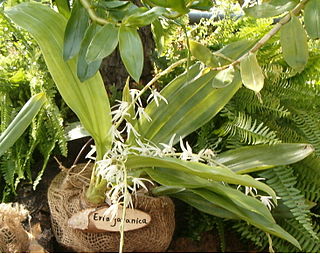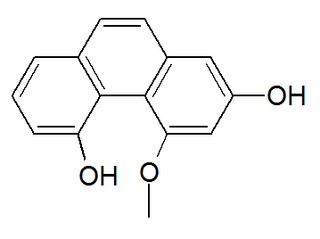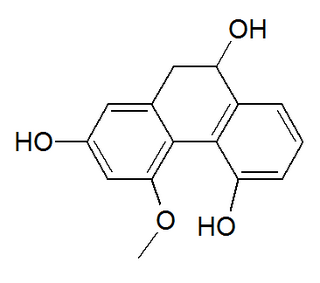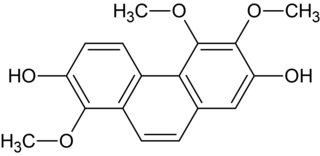
Eulophia, commonly known as corduroy orchids, is a genus of about two hundred species of flowering plants in the orchid family, Orchidaceae. Most Eulophia orchids are terrestrial but some are deciduous while others are evergreen. They either have an underground rhizome or pseudobulbs on the surface and those species with leaves have them on the end of a fleshy stem. The flowers are arranged on a thin flowering spike, the flowers having sepals which are larger than the petals. The genus is widely distributed but most species are found in Africa and Asia, usually growing in shady places with grass or shrubs in forests.

Grammatophyllum speciosum, also called giant orchid, tiger orchid, sugar cane orchid or queen of the orchids, is a species of orchid native to Laos, Myanmar, Thailand, Vietnam, Borneo, Indonesia and Malaysia. It has also been recorded in the Philippines, New Guinea and the Solomon Islands. It is listed by the Guinness Book of World Records as the world's tallest orchid, with specimens recorded up to 7.62 metres (25 ft) in height.

Phenanthrenoids are chemical compounds formed with a phenanthrene backbone. These compounds occur naturally in plants, although they can also be synthesized.

Eria is a genus of orchids with more than 50 species distributed in China, the Himalayas, the Indian Subcontinent, Southeast Asia, New Guinea, Polynesia, Melanesia and Micronesia.

Cryptochilus acuminatus, synonym Eria carinata, is a species of orchid. It is native to Nepal, Bhutan, Assam, Thailand, Vietnam and peninsular Malaysia.

Maxillaria densa, the crowded maxillaria, is a species of orchid ranging from Mexico south to Nicaragua.
Bulbophyllum reptans is a species of orchid in the genus Bulbophyllum.
Bulbophyllum crabro, commonly called "Kam Pu Ma" in Thai, is a small orchid that grows as an epiphyte or is sometimes found as lithophyte. It grows in rainforests 1,600-2,000 m above sea level. It was formerly known as Monomeria barbata and was the type species of the genus Monomeria, now synonymous with Bulbophyllum. It is used in traditional Chinese medicine for treating coughs, pulmonary tuberculosis and trauma.

Dendrobium plicatile is an orchid species of Asia. It was formerly treated as Flickingeria fimbriata in the genus Flickingeria.

Plicatol A is one of the three phenanthrenes that can be isolated from the stems of the orchid Dendrobium plicatile.

Plicatol B is one of the three phenanthrenes that can be isolated from the stems of the orchid Flickingeria fimbriata. It can also be isolated from Dendrobium densiflorum, D. loddigesii, D. moschatum, D. rotundatum and Bulbophyllum kwangtungense

Plicatol C is one of the three phenanthrenes that can be isolated from the stems of the orchid Flickingeria fimbriata.

Gymnopusin is a phenanthrenediol produced by the orchid Bulbophyllum gymnopus. It is also found in Bulbophyllum reptans and Maxillaria densa.

Orthochilus ecristatus, or giant orchid, is a terrestrial species of orchid native to Cuba and to the southeastern United States. It was previously known as Eulophia ecristata or Pteroglossaspis ecristata until recently transferred to the genus Orthochilus. This is one of several species known as a "giant orchid".
Cirrhopetalum maculosum is an orchid species in the genus Cirrhopetalum.

Coeloginanthrin is a phenanthrenoid found in the orchid Coelogyne cristata.

Confusarin is a phenanthrenoid found in the orchids Eria confusa and Bulbophyllum reptans. It can also be synthesized.

Eulophia nuda, the spectacular eulophia, is a species of corduroy orchid found in tropical and subtropical Asia to the Western Pacific.














